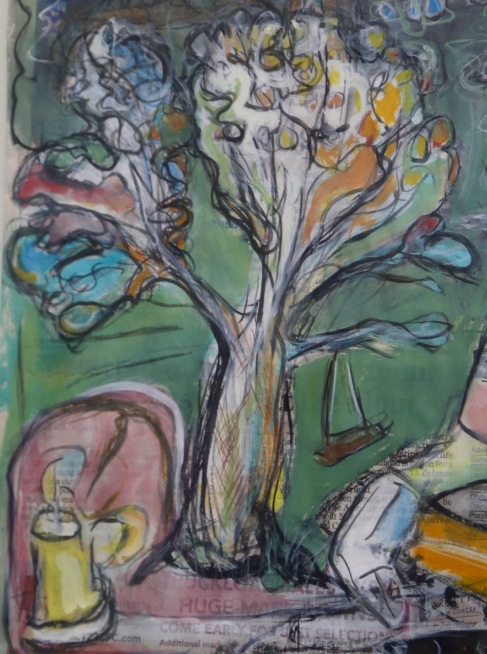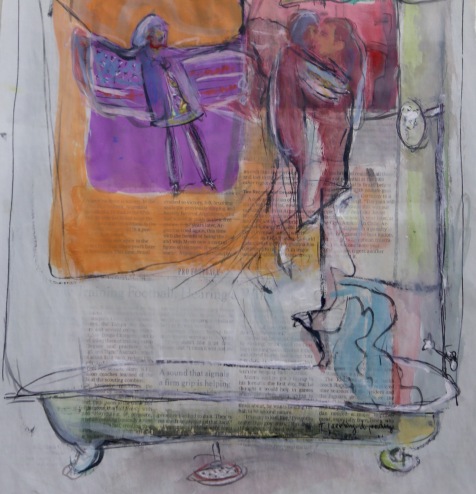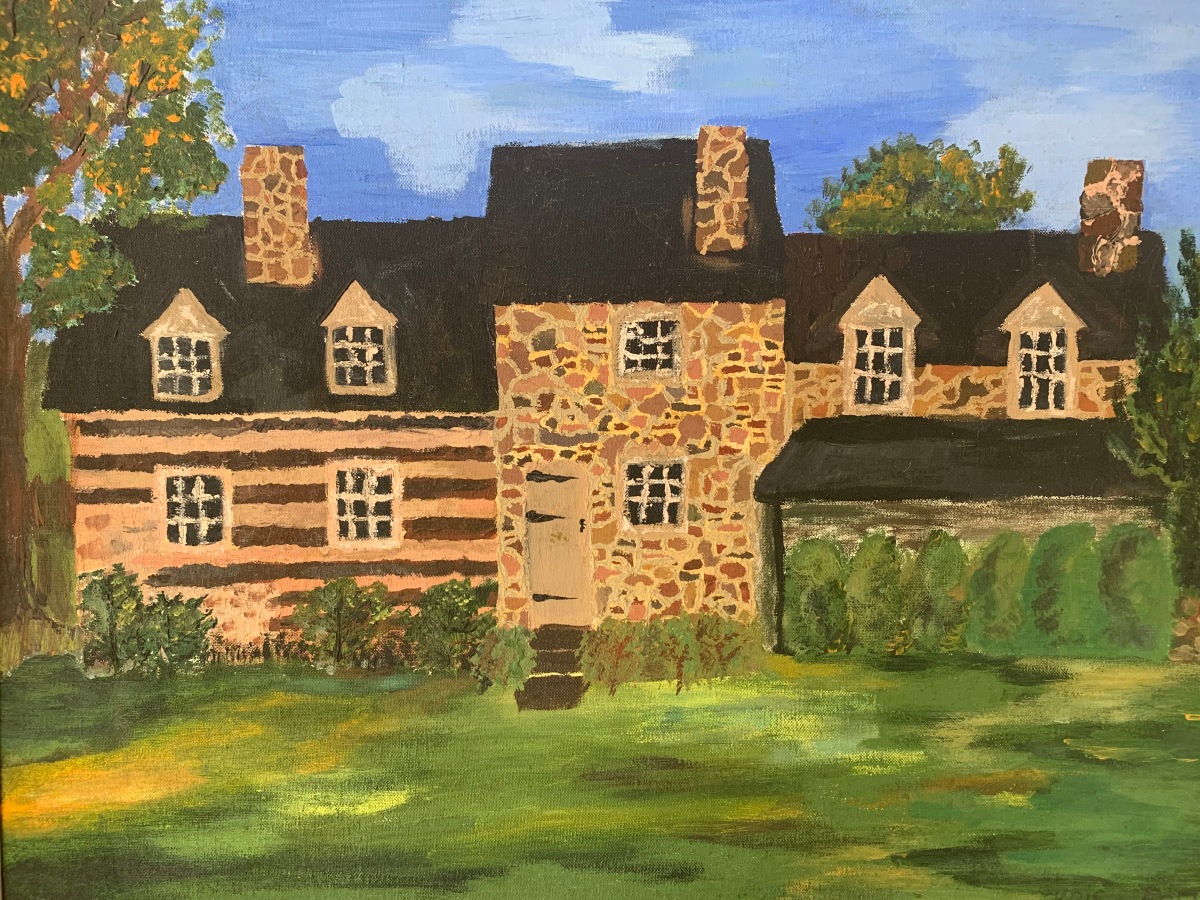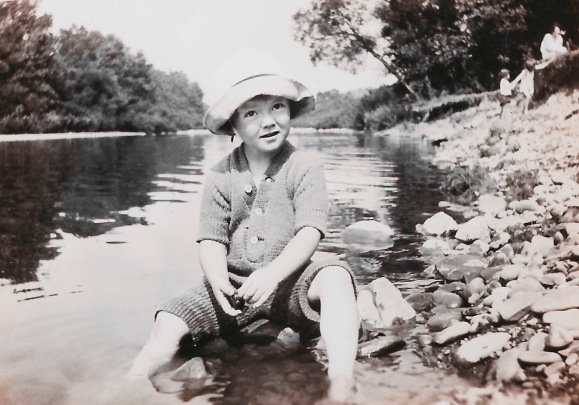The email came through early in the morning with just David’s name in the subject line.
David had been at my house nearly every day for months at a time, crafting a European-style bathroom and other contemporary modifications that I hoped would help turn my tired old Dutch barn-styled home into something more like a Scandinavian farmhouse. But he had not shown up the day before as promised.
Reliable and practical with an appealing amount of orneriness, David wore his clothes until they wore out. He drove an old silver Toyota Tacoma held together by 18 bumper stickers, including one that said “Speeding Kills Bears” and another that just had the word, “artist.”
Much as he tried to hide it, David was also kindhearted and giving. Decades ago, he’d started one of the first organic food markets in San Francisco, riding his bike back and forth to the store each day, often stopping to give food to a few homeless souls huddled up against the weather.
David eschewed all forms of social media and refused even to send or receive text messages. “There’s 60,000 texts ‘out there’ waiting for me, and I’m afraid to even go there now,” he once laughed. But it was unusual for him not to appear on my doorstep when promised.

The email informed me he died of natural causes, but it was anything but natural to me that someone I was used to seeing every day no longer existed. There must be some mistake, I thought, re-reading it several times.
Not David. Not the fit, strapping man in his 50s with the ironic smile. Not someone so full of life, someone who loved camping with his kids, someone who woke them up to marvel at a particularly spectacular full moon.
My yoga room was his last project. He had recently hung up his tools and was basking in semi-retirement. When I called him to ask if he’d mind coming over to work on it, he left a message that left little doubt he was savoring his new free time: “Whatever you want to do is going to be okay with me – as little or as much as you feel like. I’m actually standing on my little deck, looking out over the mountains, in a t-shirt, drinking a gin & tonic. So there you go, that’s my life.”
How could this feisty and wonderful friend no longer exist?
Go to his house, I thought. He’ll be there and then everything will be okay.
I had never actually been to his home, but I knew which mountain ridge he lived on. I grabbed my keys, got in my car and headed north.

Recalling fragments of stories he’d told me about his next door neighbors and their homes, I narrowed the possibilities for David’s house down to an old grey 1930s bungalow on the top of the hill – the one surrounded by potted plants, one of which looked like one I’d given him a few years back. There were several vehicles in the gravel driveway, parked in a hurried, disorderly jumble – and I knew when I saw them that it was possible the unthinkable had really happened.
I pulled over in the field next door and stared at the cars and the house for some long moments before something inside me said, Go inside the house.
Anyone who lives around here can tell you that appearing unannounced at the house of a stranger is not something you should do in Appalachia, but by then grief had overwhelmed common sense.
I got out of my car and walked over to the steps leading up to the back porch and what I guessed was the kitchen door. I paused at the top, scared of knocking, scared of intruding, scared of being wrong.

And then the door opened and I was flooded with relief – for there was David standing in front of me.
And then, between one beat of my heart and the next, I realized it wasn’t David, and the precious relief I had felt for just an instant vanished. It was someone who looked just like David, someone who reached out and folded me into his arms as I broke down in tears.
Glancing around the kitchen, I saw two more versions of David – tall, tongue-tied and helpless, wiping their eyes. David had three brothers and here they all were.

Just as I knew who they were without being introduced, they all seemed to know who I was.
There was an awkward flurry of stories, reminiscences, tears, some shaky laughs and then more tears. Great gaping holes of grief and disbelief surrounded by questions, guesses and fragments of answers.

The last time I’d seen David was two days earlier. . Piecing together the fragments of that day later with others who knew him, it seems he left my house, ran into a few friends at the local market, went home, painted, opened a bag of chips, poured a beer, turned on the game, and laid down on the floor to ease the ache in his back.
And then, he died.
I had worried about intruding, but the brothers put me right at ease. They all knew so much about me. One brother thanked me for being who I was in David’s life, whatever that was. Moments and more moments passed, who knows how many, before that little voice inside nudged me again and said: Ask to see his studio.
Over our three years of friendship, David had invited me once or twice to come and see his paintings. I didn’t take him up on the offer right away and later, when I asked him a few times to show them to me, he responded that someday he would.

And now, at this moment, every part of me knew that I needed to see his paintings, even if he wasn’t there. I knew that, despite our hours of conversations, I would not really know who my friend was until I saw his art. I dreaded it, and yet I needed to do it.
Lisa, David’s sister-in-law, led me through rooms filled with a carefree, but very neat mash-up of old family pieces, art, and rescued treasures. It brought back fond memories of friends I’d known back in my 20s.
We walked past the kids’ rooms, through the living room, and into his bedroom, where she paused silently for just a moment to touch a pair of David’s paint-splattered heavy-duty work pants hanging on a hook. And then, she led me into his “studio.”
I had to smile when I saw that the man who had teased me about converting my master bath to a yoga studio, had made the master bathroom of his house into an art studio.

Everything was just as he had left it – a tidy array of art supplies, waiting for him to come back and pick up the brushes again.
I had been nervous to see his art. What if I didn’t like it? But as Lisa began opening drawer after drawer filled with paintings, I caught my breath.

The color, the spirit, the movement, the life and energy in each painting was astonishing. Where did all of this come from? I thought I knew my friend, but we had only scratched the surface with our exchanges of stories. I had no idea of the magic within.
“He painted on newspapers,” Lisa told me, showing me sheet after sheet of delightful images. “And he painted every day.”
He painted every day.
If she said something after that, I don’t remember, as those four words reverberated over and over in my head.
I felt unbearably sad, tortured for not having known this vital part of him while he was still living. The more I saw, the more twisted and wrenched with remorse I was for not having seen his art while I could still tell him how much I loved it.
It wasn’t until much later that I realized my feelings would probably not have been that important to him. A true artist, and the son of two artists, David painted – as all artists should – for himself.

David kept only a small circle of friends. He was a good dad and crazy about his kids, but his spare time was spent creating. As a result of living a life of few distractions, he leaves behind an incredible body of work.
It’s difficult enough dealing with the sudden disappearance of someone from our lives, but what can make it even harder is what the end of someone’s life reveals to us about ourselves. That I didn’t follow through on his invitation to see his art still sears me with remorse. My guess is that David was most himself when he painted and I missed seeing that. My loss.
With David’s death, an artist vanished leaving no written exchanges, no daily banter on social media, but instead a drawer full of hidden treasures, evidence that he had indeed been present. He was here.

The lasting wish of the artist, as French poet Paul Eluard once wrote, is to last. David was focused. He painted every day. And his paintings will last on far beyond his life.
It’s sadly ironic that losing David was what it took to help me pull focus on my own work. Still pondering his loss months later, I have come to realize that it is when I write, or capture a scene with my camera that especially moves me, that I most feel myself. It’s these pure moments when, undistracted, I let the physical creative synergy moving through me fully inhabit my body and mind.
And so I offer this tale as gentle encouragement to all artists. Paint – or photograph or write or whatever it is you do – for those internal fireflies of emotions that glow within you whenever you are happy with your results.
Paint every day.

David Patrick Joerling
1957-2017
















































